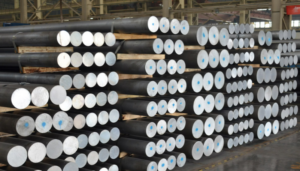High speed steel (HSS), is a unique category of tool steel with remarkable hardness, toughness, and wear resistance. Its unique alloy composition and heat treatment process allow it to maintain its cutting edge at high temperatures, making it a preferred material for manufacturing cutting tools such as lathe bits, milling cutters, and drill bits. This article delves into the composition, properties, types, applications, and advantages of high speed steel (HSS).

All About High Speed Steel (HSS) You Must Know
Composition of High-Speed Steel
High speed steel (HSS) is a complex alloy containing significant amounts of tungsten (W), molybdenum (Mo), chromium (Cr), vanadium (V), and cobalt (Co). The tungsten and molybdenum are carbide-forming elements that contribute to the hardness and wear resistance of the steel. Chromium improves the corrosion resistance, while vanadium and cobalt enhance the red hardness, or the ability to maintain hardness at elevated temperatures.
Properties of High-Speed Steel
The key properties of high-speed steel are:
- Hardness: High speed steel (HSS) achieves high hardness levels through heat treatment, typically reaching Rockwell C hardness values of 60-67.
- Toughness: Despite its hardness, high-speed steel remains tough enough to resist breaking or chipping during use.
- Wear Resistance: The carbide-forming elements in high-speed steel contribute to its excellent wear resistance, allowing it to maintain a sharp cutting edge for extended periods.
- Red Hardness: High-speed steel retains its hardness at temperatures up to 600°C (1112°F), making it suitable for high-speed cutting operations.
- Machinability: Although it is a tool steel, high-speed steel can be machined and shaped to precise specifications.
Types of High-Speed Steel
There are several types of high-speed steel, each with slightly different compositions and properties:
- M-type High-Speed Steel: This is the most common type, with tungsten as the primary carbide-forming element. It offers good wear resistance and toughness.
- T-type High-Speed Steel: Tungsten and molybdenum are used in this type, providing improved toughness and red hardness.
- P-type High-Speed Steel: This type contains cobalt, which significantly enhances the red hardness and wear resistance. It is often used for demanding cutting applications.
- Co-type High-Speed Steel: Cobalt is the primary alloying element in this type, giving it exceptional red hardness and wear resistance. However, it is also the most expensive.
Applications of High Speed Steel (HSS)
High-speed steel finds widespread applications in the manufacturing industry, particularly in metal cutting operations. Some common applications include:
- Lathe Bits: High speed steel (HSS) lathe bits are used for precision turning operations on lathes.
- Milling Cutters: Milling cutters made from high-speed steel are suitable for milling various materials, including metals, plastics, and wood.
- Drill Bits: Drill bits for metal drilling applications are commonly manufactured from high-speed steel due to their ability to maintain sharpness at high temperatures.
- Reamers: High-speed steel reamers are used for enlarging and finishing holes to precise dimensions.
- Broaches: Broaches for cutting keyways, slots, and other complex shapes are often made from high-speed steel.
Advantages of High-Speed Steel
The advantages of using high-speed steel include:
- Longevity: High speed steel (HSS) tools maintain their cutting edge for longer periods, reducing the need for frequent tool changes.
- Versatility: High-speed steel can be used for a wide range of cutting applications, from precision machining to heavy-duty cutting.
- Cost-Effectiveness: Although high-speed steel tools may have a higher initial cost, their longevity and versatility often make them a cost-effective choice in the long run.
- Ease of Availability: High-speed steel is widely available in various grades and forms, making it easy to source for toolmaking and manufacturing applications.
Conclusion
In conclusion, high speed steel (HSS) is a vital material in the manufacturing industry, providing exceptional hardness, toughness, wear resistance, and red hardness. Its unique properties and versatility make it a preferred choice for a wide range of cutting and machining applications.
Thank you for reading our article and we hope it can help you to have a better understanding of high speed steel (HSS). If you are looking for high-speed steel suppliers and manufacturers online now, we would advise you to visit Sino Special Metal.
As a leading supplier of high-speed steel from Shanghai China, Sino Special Metal offers high-quality high-speed steel products at a very competitive price.




